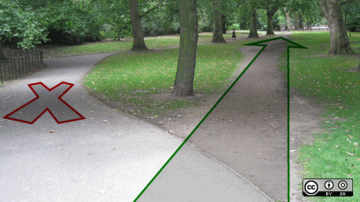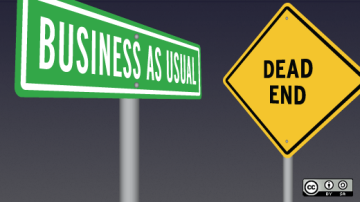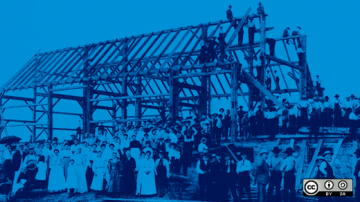
I am President + Partner at New Kind, a branding agency that specializes in helping open source and SaaS technology companies grow. Formerly Sr. Manager, Brand Communications + Design at Red Hat, and prior to that, held communications roles at IBM and Gateway. Find Jonathan on LinkedIn.





Authored Comments
Great article.
Companies that want to use their mission statement to show they're empowering their people have a great place to start: the mission statement itself.
If you want to give your employees a voice, actually give it to them. Open up the process of writing the mission statement. Exchange ideas out in the open.
You might want to give them a framework to provide leadership and direction for their thinking--but then share this work with them. Give them a forum to exchange ideas: Internal mailing lists. On a company blog. In town hall-style meetings. (Or even your customers in a public forum?)
Let them speak about what is most true about who they are and who the company is. Show them their ideas matter. Allow the best ideas to emerge.
Chances are, you'll find the language people in your company use are less likely to be the stock phrases, "the leader in this and committed to that..." Which stands a better chance of sticking in people's minds so they'll remember and repeat it.
After all, the goal of any mission statement is to inspire people and help them guide their everyday actions. And if you want to inspire people with a statement of empowerment, start at the phrase itself. You'll give them a statement they can actually get behind because they'll have had a hand in creating it.
No matter what the outcome, you're going to learn a lot about who your company really is along the way.
Hello Harrison! Thank you very much for posting your comment. It's clear that your idea, while going back 25 years, has certainly remained compelling and relevant. Technologies change, companies change, but we all have finite amounts of time and attention and no shortage of forces competing for it. So thank you for sharing your idea--it's great to hear more about it from the source.
I've been very interested to read all of the different perspectives from people who have tried to apply self-organizing community principles to their meetings and projects, and others that would love to try. Particularly for those where it didn't work, what do you think would have had to change in the organization to make it work? I think Annamarie really hit on something when talking about the right conditions and cultural climate that needs to be in place to support these kinds of principles.
It seems like when people learn about these principles, the aspect they're either most attracted to (or fear most) is the idea that if I don't think a meeting is valuable, I don't have to go. When it seems there is also another side--that it shifts accountability toward the participant. In the real world, some meetings you simply have to attend, and in those cases, you still choose whether or not to engage. I like Brad's comment on this. Of course engagement may not necessarily mean speaking (Nothing worse than a meeting where everyone thinks they have to say something!), but at least listen actively, learn, contribute to a positive atmosphere, use your attendance for good rather than evil... If nothing else, at least the choice you made to "be there" was your own!